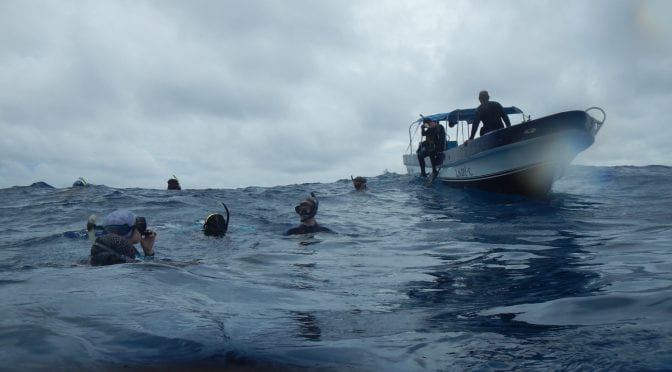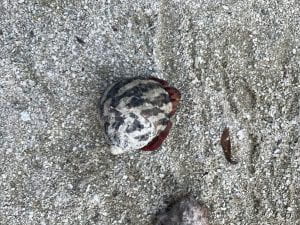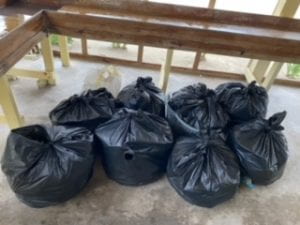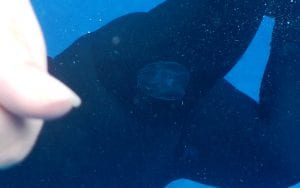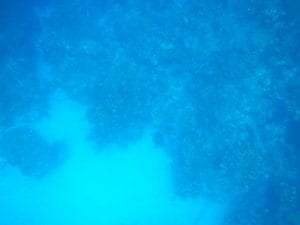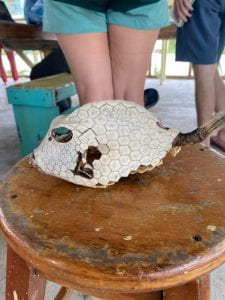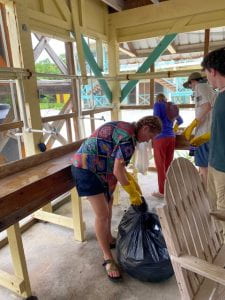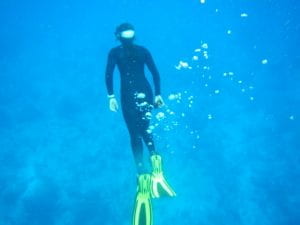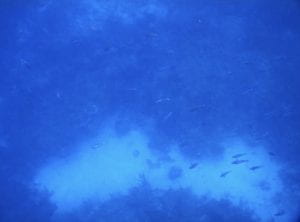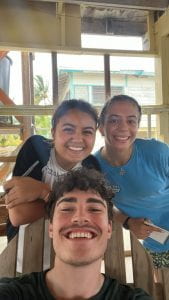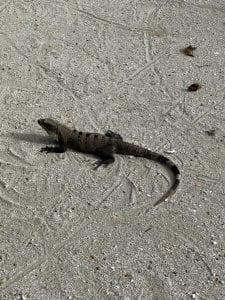With our suitcases in hand, we lay on the dock one last time, watching the schools of fish drift peacefully beneath us. We had already munched on bread and peanut butter, said our thank yous to the incredible staff (especially the chefs) and the unmatched views, and bid farewell to dear Clivus (the compostable toilet). By 6:30 am, we were ready for the 70-mile boat ride back to Belize City.
(View from Dining Room – 05/27/25)
Just as the engine roared to life, I reached for my music and realized my phone was missing. In a burst of panic, Elise, Sadhana and I took off running through the island checking every corner in search of it. It had been on our bucket list to go for a run, so this last-minute scramble felt stressfully perfect. We jogged back to the boat winded, and then we were officially on our way.
The three-hour ride passed in a blur of sleep, waves, and staring into the distance. Our captain spotted a sea turtle, and we passed by several islands. Some boasted polished resorts and others had quiet little villages. I noticed that one island had no trees, no shade, and sun-bleached roofs and walls. It looked a bit deserted, cooked by the heat, and I wondered if there was anyone there.
Then, in the distance, I saw a big island, with… cars??? Buildings grew larger, highways became visible from the shore, and I wondered how people brought vehicles to and island and why. Then, I saw no end to the island and realized it wasn’t an island at all. We had arrived at our mainland destination: Belize City.
(Giant Island aka. Mainland Belize City – cruisemapper.com)
Our boat docked a very elegant hotel. I didn’t even need to use the bathroom, but I went anyway to experience a non-compostable toilet. The bathroom was glorious experience, with a sink for washing hands and even some music – truly luxuries. On our drive back to the airport, we revisited familiar ground, like the department store we’d stopped at the week before, scattered resorts, the Central American flag monument near the airport, and the small runway lined with tiny planes and a few commercial jets. I took mental screenshots of it all, trying to lock in the memories our class made together and everything we learned about Belize. It is truly a remarkable place filled with wild beauty, from deep in the rainforest to far out in the reef- (and sponge-!) filled sea.
(Going Home – 05/30/25)
Peace Out,
Lily H. 🙂 2025










